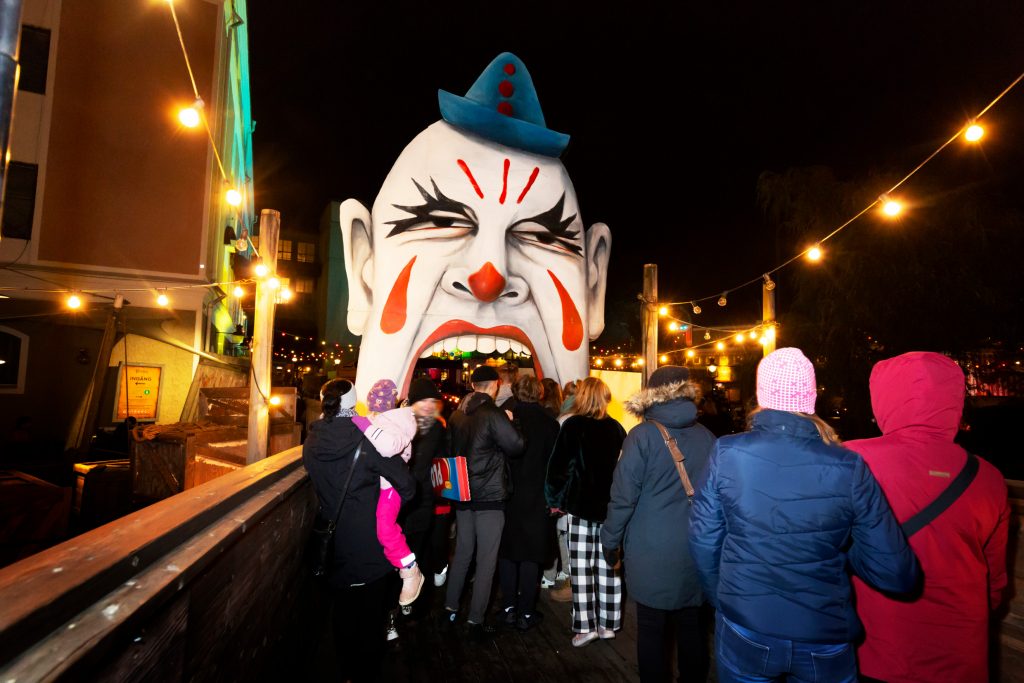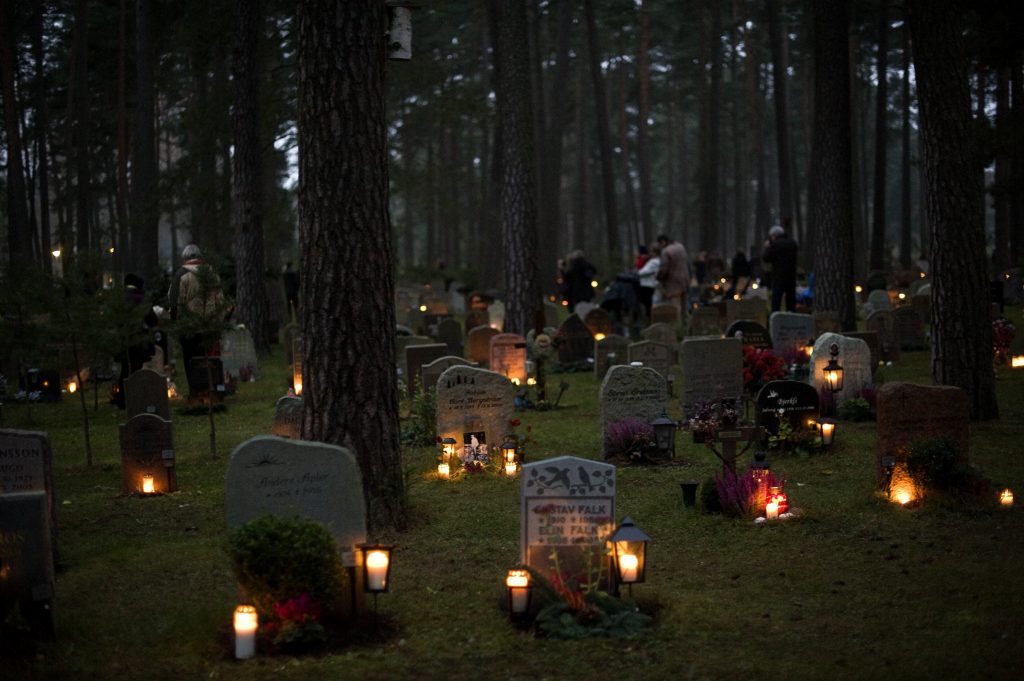Trick or treat! Bus eller godis! Posted by Chelsea B on Oct 29, 2019 in Culture, Vocabulary
With Halloween this Thursday, spooky celebrations are in full-swing in the United States. Kids spend months planning their Halloween costumes, houses are adorned in creepy decorations, and neighbors stock up on candy to hand out to hordes of trick-or-treaters. In Sweden, the end of October traditionally symbolizes Alla helgons dag, All Saints’ Day. However, Halloween is also celebrated by many, gaining popularity with Swedes over the last few decades.
American consumers spend a whopping 9 billion dollars on Halloween each year, according to the National Retail Federation. Swedish Halloween on the other hand, brings in about 1 billion Swedish krona yearly. The market for Halloween has been gaining momentum since the 1990’s when businesses began to capitalize on Halloween as a retail venture, boosting the holiday’s popularity in general.
en högtid – flera högtider festival, celebration
Halloween är en högtid som firas den 31 oktober.
Halloween is a festival that is celebrated on October 31st.
ett ursprung – origin
Halloween har sitt ursprung på Irland och delvis i Skottland.
Halloween’s origin is in Ireland and partially in Scotland.
att fira to celebrate
-> firar -> firade -> firat -> fira!
När ska vi fira Halloween i år?
When will we celebrate Halloween this year?
Be it witches, vampires, ghosts, and other less-creepy costumes, Swedes love a good maskerad, or costume party. The maskerad-style party is popular even for older kids and adults around Halloween, as well as other times of the year. To mark a special occasion like a birthday party, bachelor/bachelorette party, Swedes go all-out for themed costume parties.
en spökkostym – kostymer a spooky costume /costumes
att klä ut sig to dress up
-> klär ut sig -> klädde ut sig -> har klätt ut sig -> klä ut sig
Vad ska jag klä ut mig till på Halloween?
What shall I dress up as on Halloween?
en häxa – häxor a witch/witches
ett spöke – flera spöken a ghost – several ghosts
en vampyr – vampyrer a vampire – vampires
en varulv – varulvar a werewolf – werewolves
Today Swedish businesses, organizations, and media capitalize on this holiday. Liseberg, the amusement park in Göteborg hosts a haunted house, and lösgodis, Swedish pick-a-mix candy purchasing spikes dramatically. Cafés and restaurants have spooky specials and line their bakery cases with Halloween-themed goodies. Schools and other organizations may organize Halloweendiscos, parties, and pumpkin carving parties.
ett lösgodis — pick-and-mix candy
att öka to increase
-> ökar -> ökade -> har ökat -> öka!
Lösgodis säljande ökar kraftigt kring Halloween.
Candy sales increase dramatically around Halloween.
ett skräckhus — a “haunted” house
Liseberg har två skräckhus i år. Liseberg has two haunted houses this year.
att gröpa ur pumpor to carve out pumpkins
-> gröper -> gröpte -> har gröpt -> gröp!
Har du någonsin gröpt ur en pumpa?
Have you ever carved a pumpkin?
Bus eller godis! Trick-or-treating for Halloween still isn’t all that common in Sweden. Some neighborhoods will organize a time for the local children to get dressed up and say “bus eller godis” but it’s not necessarily on October 31st. More popular than trick-or-treating, is the Swedish Easter tradition of children dressing up as påskkärringar, or Easter witches, and going door-to-door giving neighbors colorful drawings, or small gifts in exchange for candy.
en granne – grannar
Barnen går runt bland grannar och ber om “bus eller godis.”
Kids go around to neighbors and say trick or treat.
att knacka på to knock on the door
-> knackar -> knackade -> knackat -> knacka!
Knacka inte på om ljuset är släckt.
Don’t knock on the door if the lights are off.
Alla helgons dag, All Saints’ Day is not to be confused with Halloween in Sweden. This holiday is widely celebrated in Sweden and is a time to remember loved ones who have died. Alla helgons dag this year is November 2nd and is often celebrated by honoring the memory of those who have passed by lighting candles and placing flowers on graves.
en kyrkogård – kyrkogårdar
a cemetery / cemeteries
Många besöker kyrkogårdar under Allhelgonahelgen.
Many visit cemeteries during All Saints’ Weekend.
en grav – gravar a grave – graves
Det är vanligt att sätta ljus på gravar i Sverige.
It is common to place candles on graves in Sweden.
att minnas to remember
-> minns -> mindes -> har mints – –
Vi minns de döda på Alla helgons dag.
We remember the dead on All Saints’ Day.
Looking for more on Swedish Halloween? Enjoy some links below and create your own spöklig ordlista / spooky word list!
Programs from SVT
Väsen
From the SVT for kids:
Spökpatrullen , Vem spökar, Alfons Åberg? , Häxan surtant , Labyrint

Build vocabulary, practice pronunciation, and more with Transparent Language Online. Available anytime, anywhere, on any device.





